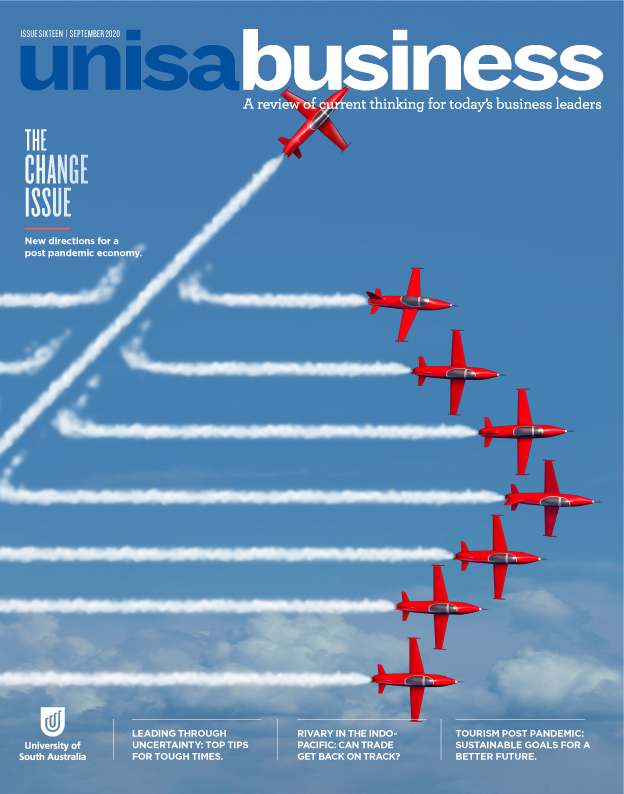01 September 2020
Author: Professor Cheri Ostroff
Organisational change has become the new normal. So, it’s no surprise that today’s leaders regularly redesign products and the delivery of services, revamp strategic goals, overhaul the organisational structure and practices, and alter how employees work together, all in the pursuit of higher performance.
What is a surprise, however, is that so few leaders view periods of major organisational change as an opportunity to simultaneously put a spotlight on diversity and inclusion.
Change as a diversity and inclusion opportunity

In recent years, there has been increasing public awareness of the importance of valuing diversity, whether it be gender, LGBTQI+, disability, age, race, ethnicity, cultural background, or other diverse identities.
Making a case for a diverse workforce is the easy part.
We know that organisations that attract, retain, promote, and consciously manage a diverse group of employees can reap benefits through improved creativity, innovation, problem-solving, and decision-making. Diversity opens new markets, enables better customer service for a wider array of clients, and helps an organisation build a reputation as an employer of choice. Furthermore, workers who feel included are more likely to be highly engaged, loyal, satisfied, and bring their best selves to work on a daily basis.
The hard part is making a diverse and inclusive workforce happen.
Organisational change can be an ideal time to challenge the status quo, not only in terms of how the organisation is structured or its way of doing business, but also in how it treats a valuable and enduring asset – its people.
Measure to make a difference

Recently, organisations have placed greater emphasis on gender equity and Indigenous representation, but this is only one piece of the diversity landscape. Australia has one of the most culturally diverse workforces in the world with people of different races, ethnicities, religions, and backgrounds. Workers are more open about their gender identities and sexual orientation, thousands of workers have disabilities, and a significant proportion of the workforce are considered ‘Boomers’ or older.
An organisation that is people-centred is attuned to the experiences of its employees as a whole. An organisation with a focus on diversity and inclusion is further attuned to the experiences of the diverse identities of its workers.
Yet, many organisations often don’t ask about the wide array of differences. And when we don’t ask, we can’t know about, measure, monitor or track inclusivity. Worse still, the sound of silence sends a signal to current and prospective employees that diversity and inclusivity doesn’t matter.
Organisational decision-makers have the opportunity to ask and address key questions: Do employees from diverse groups receive similar levels of pay? Do they report the same experiences, indicate the same level of trust in their leaders, and experience the same degree of camaraderie? And, ultimately, do they feel as similarly engaged and valued as their colleagues?
Understanding differences and identifying areas where underrepresented or historically discriminated groups experience their workplace differently should prompt change initiatives that enable equity, employee well-being, and organisational effectiveness to be maximized.
Importantly, looking beyond the aggregate, overall diversity and inclusion metrics can be particularly revealing for organisations.
As an example, consider an organisation that claims that gender pay equity has been achieved because women and men in the same jobs are paid approximately the same amount. A deeper analysis might show that yes, this is the case, but dig deeper and you’ll find a significant promotion gap.
Or, for example, an organisation may promote itself as an employer of choice for culturally diverse workers because a high percentage of migrant applicants to whom they offer a job, accept. Yet a more detailed analysis shows that migrants represent only a tiny portion of their applicant pool, indicating an overall low rate of attracting such employees.
Deep drilling is needed to unmask the multiple layers of diversity to ensure the context allows employees to feel included and to reach their potential.
Creating webs of diversity

Analysing the spread or clustering of people from different backgrounds across an organisation can reveal meaningful patterns.
In an effort to increase representation throughout an organisation, it can be tempting to try to disperse the employees from diverse backgrounds throughout various groups and units in the organisation. But this approach can have unintended consequences - it can create a multitude of ‘token’ employees.
Being the only one (or two) diverse employees in a larger group can dramatically shape a person’s experience at work and can lead to greater stress, depression, harassment, stereotyping and discrimination compared to working in more balanced group contexts.
Furthermore, consistently being called upon to represent one’s group can make these valued employees feel exploited. But the other extreme can be equally dangerous – clustering together underrepresented employees into a single group or two can lead to feelings of being marginalized or pigeon-holed into narrow tasks and roles.
Creating teams where some people are similar to one another can provide a sense of psychological safety and comfort, while simultaneously connecting to others in the team who are different from them can provide a range of perspectives needed to enhance innovative thinking and effectiveness.
Moving toward valuing diversity

Diversity initiatives and programs often fall far short of achieving their goals when they are put in place in isolation, without considering the broader context. Every practice – hiring, training, performance management, reward systems, work assignments, well-being programs – sends signals to employees. How leaders manage their groups, the way teams operate, how people treat one another on a daily basis – each send important signals about what is expected, valued, and rewarded in the organisation.
Mapping the signals being sent helps identify the strength of diversity messages being sent in organisations.
- What signals are being sent by the way people are hired, trained, promoted, evaluated, or rewarded? Are significant efforts made to ensure applicants pools are representative of the diversity in the population? Are some groups historically underrepresented in promotion? Are open communication processes adopted to ensure voice or consultation from diverse groups?
- Who is sending the signals? Is it only one, or handful of leaders promoting diversity? Is the same message being sent from leaders at different levels in the organisation? Are employees sending messages upward to leadership about diversity and inclusion?
- How are signals being sent? Are the signals predominantly in the form of rules and regulations? Are they a once-off or repeated regularly? Are they embedded in multiple modes of communication mechanisms?
- Why are the signals being sent? Is employee diversity appreciated and valued? Is the emphasis on non-discrimination but not one of valuing diversity? Or is it simply ‘not on the radar’?
A philosophy of non-discrimination is a good starting place but is often rule driven and mandated from the top down, something that is qualitatively different from a philosophy of embracing and valuing diversity. Non-discrimination focuses on non-action – not acting in ways that are biased or discriminatory – ensuring that differences are treated the same.

Valuing diversity is proactive – engaging people at all levels in the organisation to be inclusive of and appreciative of the differences they bring with them; ensuring diversity is distinctly valued.
The what, who, how and whys of diversity in an organisation need to operate as a system to send loud signals.
Consider how a message spoken softly from one person to the next becomes nonsensical by the end of the line. The same process happens when top leaders passively convey messages to middle managers who then convey the message further down the hierarchy – the end message will be garbled and nothing like the one intended.
Diversity signals need to be visible and salient in the array of practices and need to be communicated clearly from top to bottom, across levels, and among peers and teams.
Simple actions of inclusiveness become amplified over multiple practices, leaders, people and time to send loud signals about the value of diversity.
The success of any major change initiative in an organisation can ultimately depend on ensuring an adaptable, flexible and inclusive workforce.
Banner photo by Lewis Tse Pui Lung / Shutterstock.com



